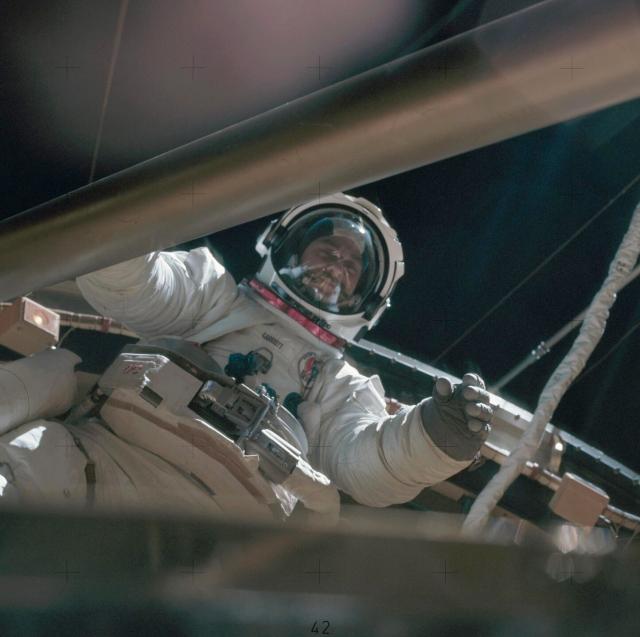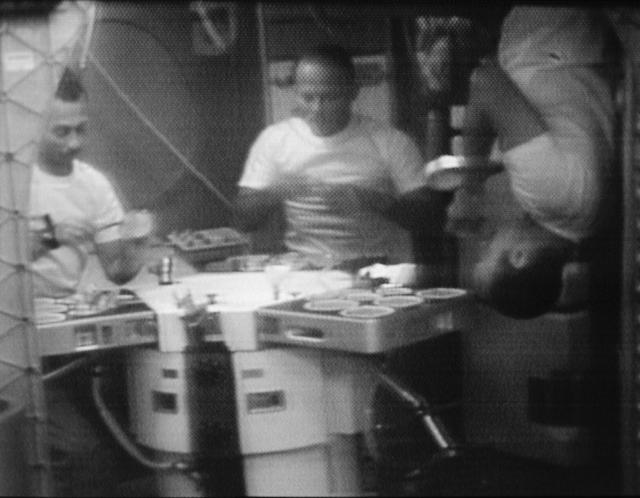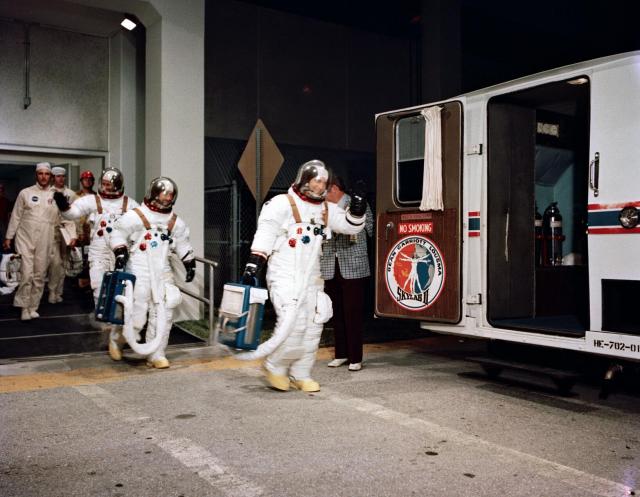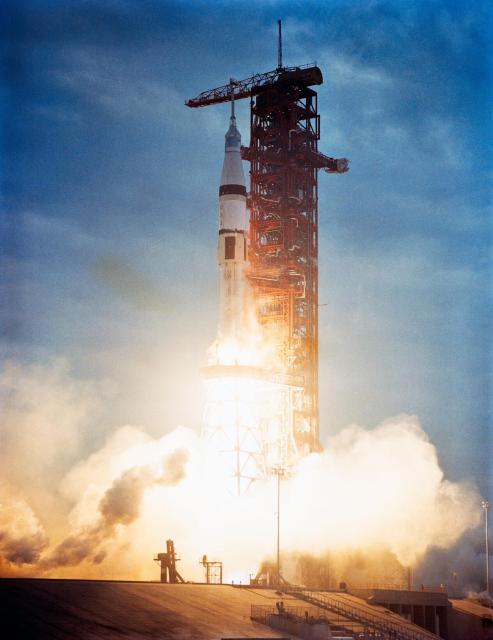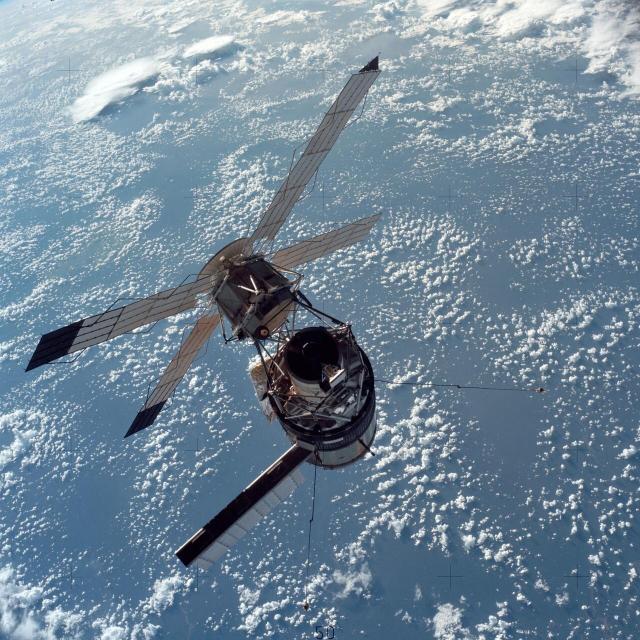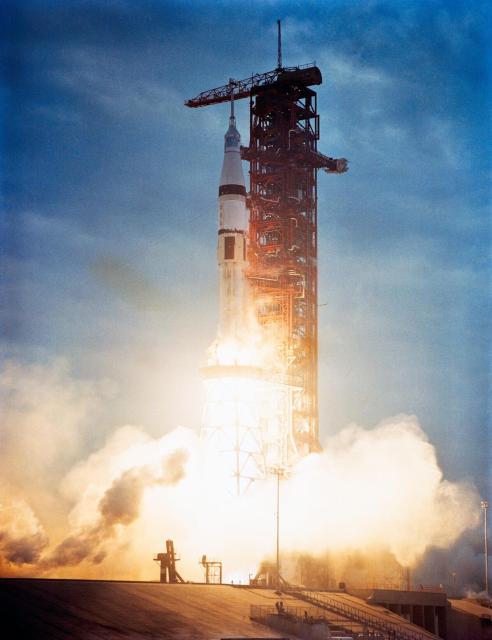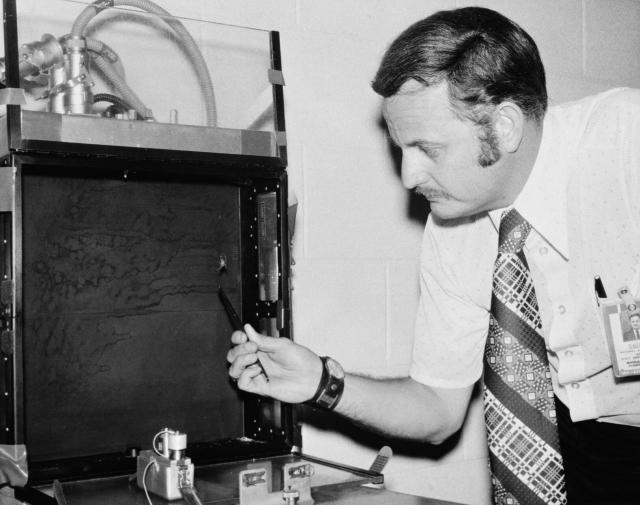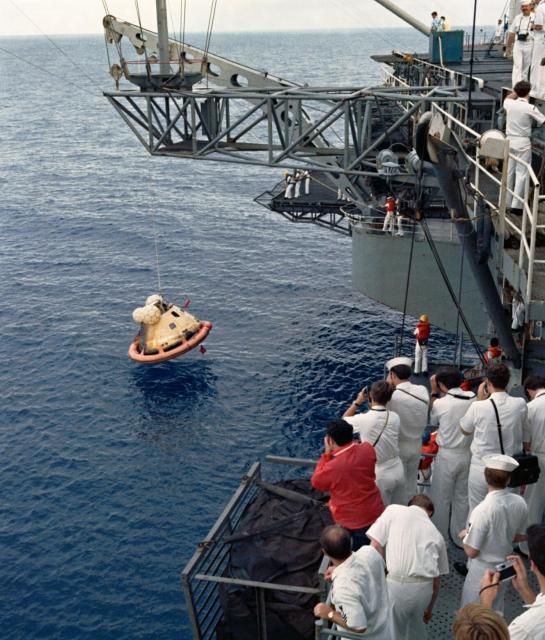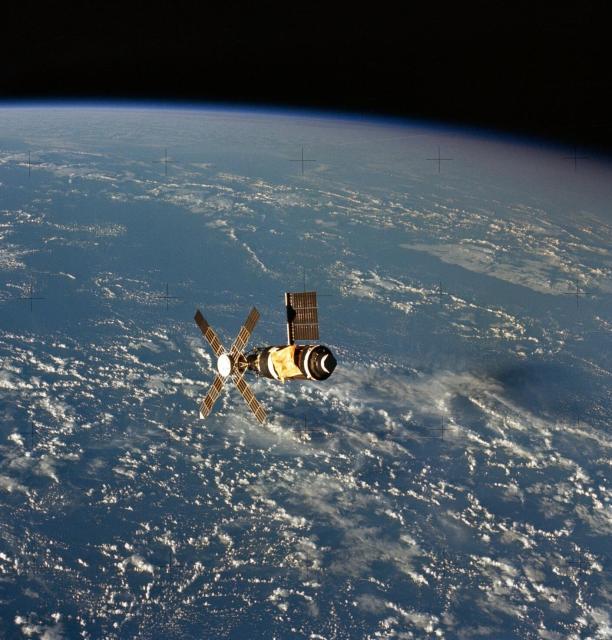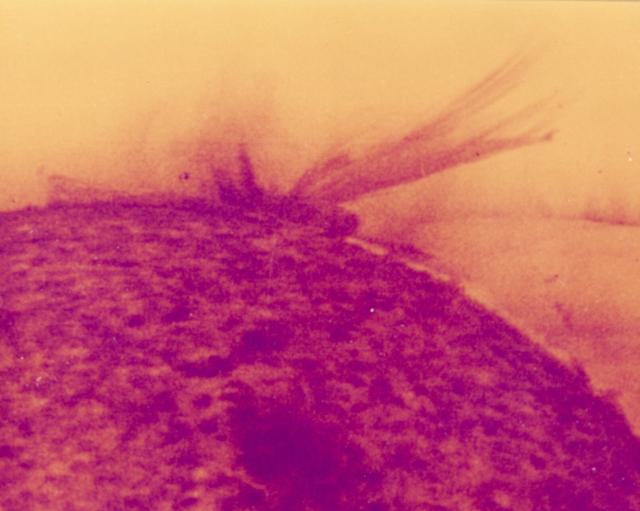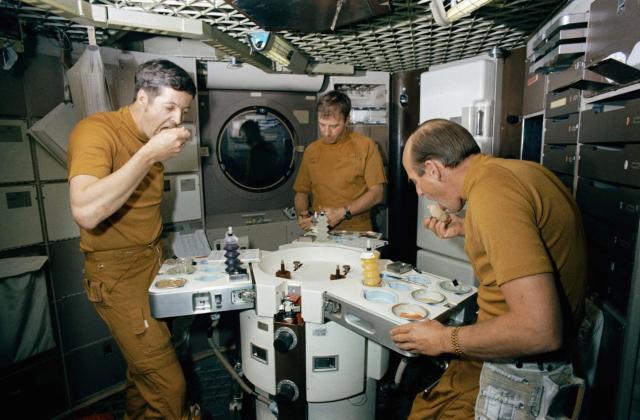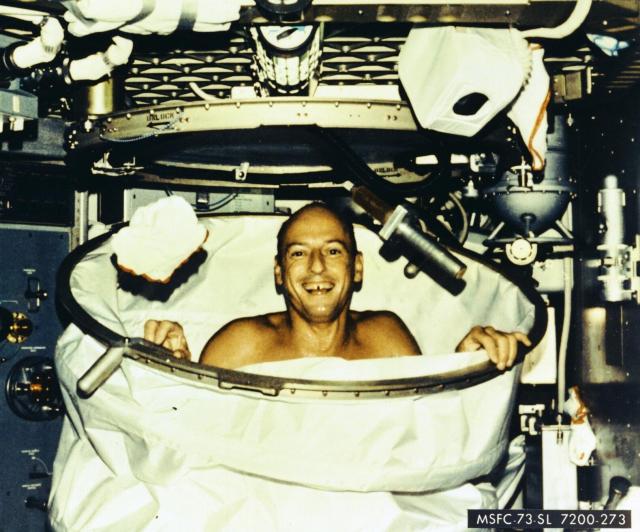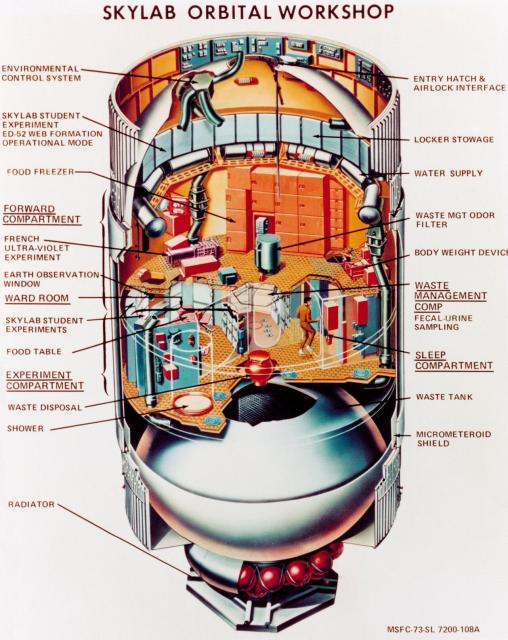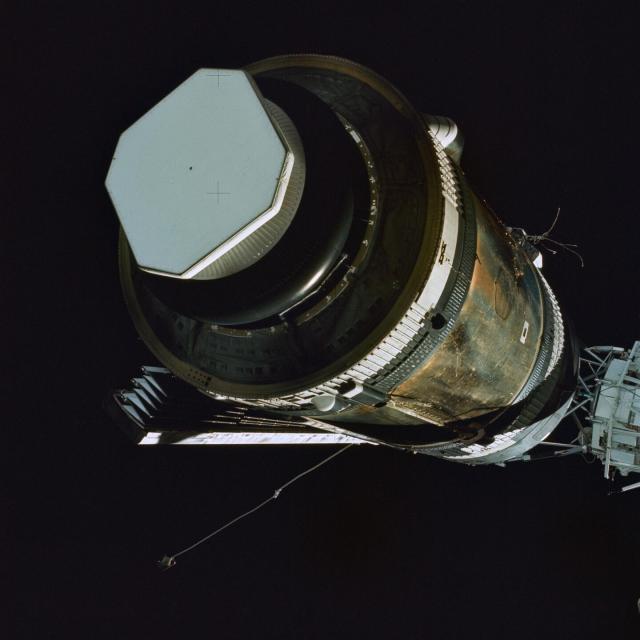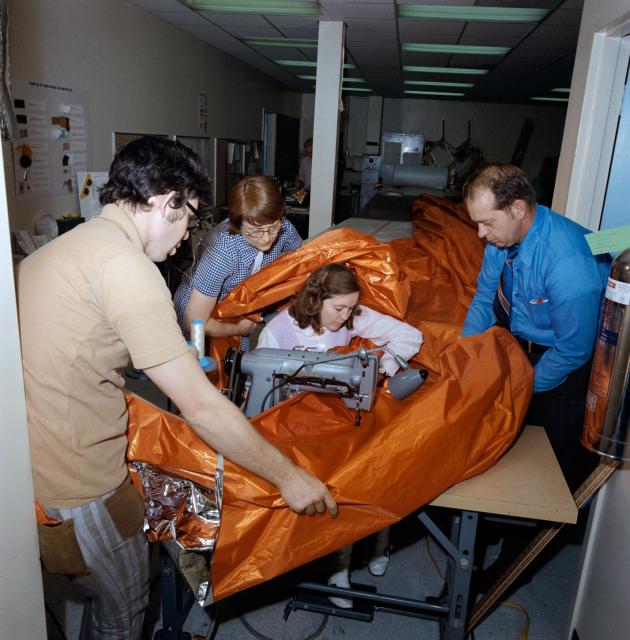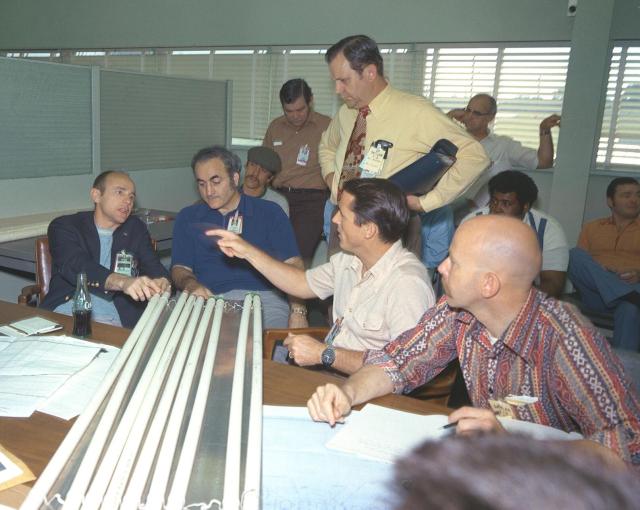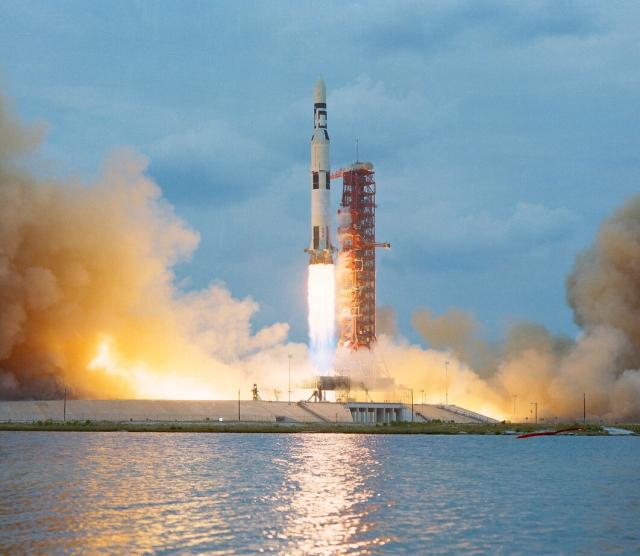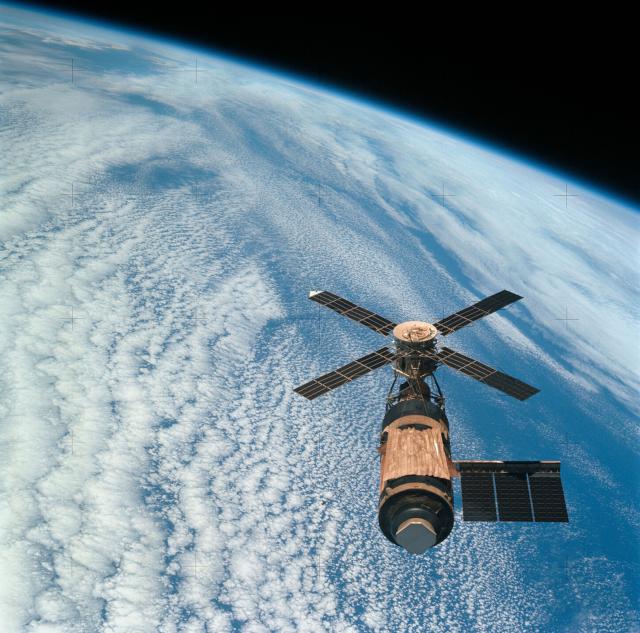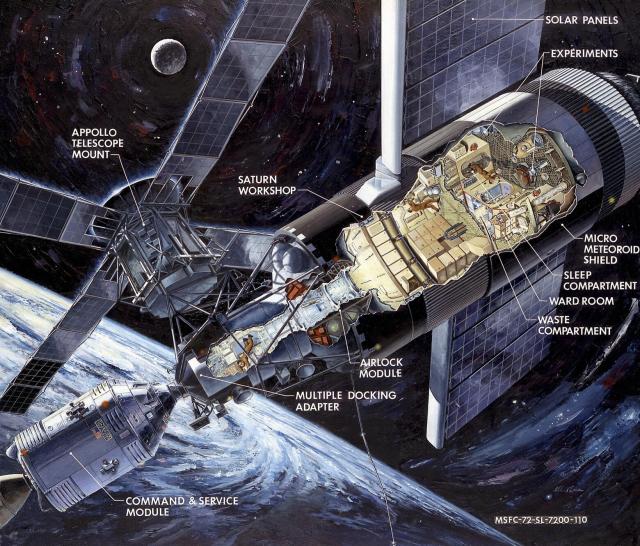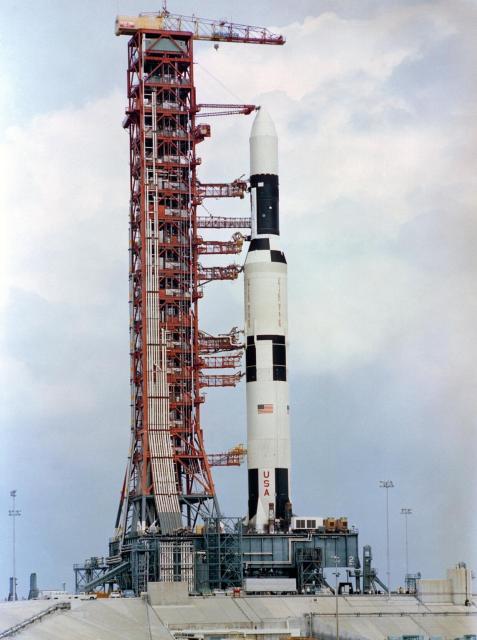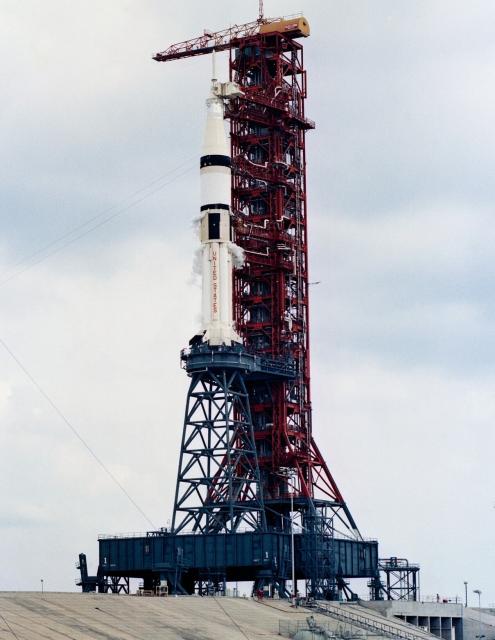Search
Items tagged with: skylab50
Owen Garriott (shown here) and his Skylab 3 crewmates performed a nearly 6.5 hour spacewalk #OTD in 1973 to install a 2-pole sunshade, change the film on the Apollo Telescope Mount, and install and repair equipment for experiments. #Skylab50
Learn more: go.nasa.gov/47rmpNR
#NASAhistory
50 Years Ago: Second Skylab Crew Begins Record-Breaking Mission
On July 28, 1973, the second crew to occupy Skylab, American’s first space station, lifted off from NASA’s Kennedy Space Center (KSC) in Florida on a planned two-month mission, at the time the longest human spaceflight.Kelli Mars (NASA)
During their first few days on Skylab, @NASA_Astronauts Al Bean, Owen Garriott, and Jack Lousma moved slowly to minimize their vertigo as they adjusted to weightlessness.
In this image taken #OTD in 1973, they have a meal together. #Skylab50
More: go.nasa.gov/3DG4ULX
#NASAhistory
50 Years Ago: Second Skylab Crew Begins Record-Breaking Mission
On July 28, 1973, the second crew to occupy Skylab, American’s first space station, lifted off from NASA’s Kennedy Space Center (KSC) in Florida on a planned two-month mission, at the time the longest human spaceflight.Kelli Mars (NASA)
The Skylab 3 mission launched #50YearsAgo today with astronauts Alan Bean, Jack Lousma and Owen Garriott on board, ready for a record-breaking 59-day mission furthering science on the Skylab space station. #Skylab50
Revisit Skylab 3: go.nasa.gov/44xOaSR
#NASAhistory
Skylab 3: Return to Skylab
Orbiting unoccupied since its first crew departed, Skylab, American’s first space station, prepared to welcome its second set of occupants - Commander Alan L. Bean, a veteran of the Apollo 12 Moon landing mission, and space rookies Pilot Jack R.Melanie Whiting (NASA)
#NASAhistory
The Skylab 3 mission launched #50YearsAgo today with astronauts Alan Bean, Jack Lousma and Owen Garriott on board, ready for a record-breaking 59-day mission furthering science on the Skylab space station. #Skylab50
Revisit Skylab 3: go.nasa.gov/44xOaSR
#NASAhistory
Skylab 3: Return to Skylab
Orbiting unoccupied since its first crew departed, Skylab, American’s first space station, prepared to welcome its second set of occupants - Commander Alan L. Bean, a veteran of the Apollo 12 Moon landing mission, and space rookies Pilot Jack R.Melanie Whiting (NASA)
50 years ago, Skylab's prime spider, Arabella, was preparing for launch. From over 3,400 proposals from high school students across the country, the "Web Formation" experiment was one of 25 chosen to fly on Skylab. #Skylab50
📸 Dr. Ray Gause feeds Arabella a fly in July 1973
#NASAhistory
Pete Conrad, Joe Kerwin, and Paul Weitz splashed down in the Pacific Ocean #OTD in 1973, successfully completing the Skylab 2 mission. #Skylab50
The record for longest time spent in space was now 28 days. go.nasa.gov/3NKEZbT
#NASAhistory
Skylab 2 Astronauts Splash Down After Record-Breaking 28-day Mission
Skylab 2 astronauts Commander Charles “Pete” Conrad, Pilot Paul J. Weitz, and Science Pilot Joseph P. Kerwin, completed their record-setting 28-day mission on June 22, 1973, with a splashdown in the Pacific Ocean. Recovery teams from the U.S.S.Kelli Mars (NASA)
#50YearsAgo today, the Skylab 2 crew said goodbye to Skylab and prepared for their return to Earth, taking this photo of the station that had been their home for the last 26 days.
Despite the slow start on the damaged station, they had salvaged the program, managed to accomplish the majority of their science goals, and broke the space endurance record during their stay! #Skylab50
Read more: nasa.gov/feature/50-years-ago-…
#NASAhistory
Skylab 2 Astronauts Splash Down After Record-Breaking 28-day Mission
Skylab 2 astronauts Commander Charles “Pete” Conrad, Pilot Paul J. Weitz, and Science Pilot Joseph P. Kerwin, completed their record-setting 28-day mission on June 22, 1973, with a splashdown in the Pacific Ocean. Recovery teams from the U.S.S.Kelli Mars (NASA)
"Houston, Skylab. I'd like you to be the first to know that the pilot is the proud father of a genuine flare." 🌟
Skylab's Apollo Telescope Mount (ATM) had 8 telescopes for observing the Sun at different wavelengths. #Skylab50 1/3
#NASAhistory
#OTD in 1973, the Skylab 2 crew made their first observations of a solar flare, recording the long-awaited event with unprecedented detail! #Skylab50
Want to learn more about Skylab's solar observations? We have a book on that! go.nasa.gov/4675SO2
#NASAhistory
Still, the Skylab 2 crew members weren't big fans. Food that tasted good in Houston tasted worse in space. The most popular item: German potato salad #Skylab50
📘 Life on Skylab: go.nasa.gov/3MRqNMx
📷 Skylab 2 astronauts try out the food while training at @NASA_Johnson
#NASAhistory
Part II - Life on Skylab
One of Skylab's most important functions was to study the feasibility of long-duration space missions.NASA
One of the most colorful of NASA's first astronauts, Pete Conrad, veteran of the Gemini 5, 11, and Apollo 12 missions, was also the commander of Skylab 2. In this photo taken 50 years ago today, he tries out the Skylab shower. #Skylab50
Do you have a favorite Pete Conrad story?
#NASAhistory
#50YearsAgo today, the Skylab 2 crew began to activate Skylab, moving into the Orbital Workshop (OWS), where it was about 55°C (130°F). It took hours to assemble and deploy the parasol through the scientific airlock.
Once deployed, the OWS's temperature began to drop. #Skylab50
#NASAhistory
6 hours after Skylab 2 launched #OTD in 1973, the crew reached Skylab and got its first view of the damage.
The protective shield of the Orbital Workshop was missing, one of the solar arrays was gone, and the other only partially deployed. #Skylab50
🔗 go.nasa.gov/3MGLqvP
#NASAhistory
Skylab 2: “We can fix anything!”
The first installment of this mini-series discussed how Skylab, America’s first space station, ran into serious trouble immediately after launching on May 14, 1973.NASA
Astronauts Pete Conrad, Paul Weitz, and Joe Kerwin, the first Skylab crew, launched in an Apollo spacecraft to the damaged space station #50YearsAgo today. 🚀 #Skylab50
Task #1: Save Skylab!
#NASAhistory
#NASAhistory
#NASAhistory
Skylab 2: “We can fix anything!”
The first installment of this mini-series discussed how Skylab, America’s first space station, ran into serious trouble immediately after launching on May 14, 1973.NASA
All hands on deck!
The launch of the first Skylab crew, scheduled for May 15, 1973, was delayed as NASA worked around the clock to come up with a plan to save the space station. Temperatures in the orbital workshop were rising quickly… #Skylab50
More: go.nasa.gov/3W6hXyr
#NASAhistory
50 Years Ago: The Launch of Skylab, America’s First Space Station
Skylab, America’s first space station and the first crewed research laboratory in space, lifted off on May 14, 1973, on the last Saturn V rocket.Kelli Mars (NASA)
The Skylab space station was launched into orbit 50 years ago today — the last launch of a Saturn V rocket! #Skylab50
63 seconds into the flight, controllers saw the first signs that something had gone wrong, kicking off a dramatic race to save the entire Skylab program.
#NASAhistory
Celebrating 50 years!
Skylab, America's first space station, launched 50 years ago this Sunday! Join us as we revisit the first long-duration space missions made by @nasa astronauts and see how they paved the way for the future. #Skylab50
#NASAhistory
#DYK that Skylab was made from the third stage of a Saturn V rocket?
Weighing about 100 tons, the interior had two "floors" divided into areas to sleep, eat, and do experiments. The largest piece of scientific equipment was the Apollo Telescope Mount. #Skylab50
#NASAhistory
#NASAhistory
